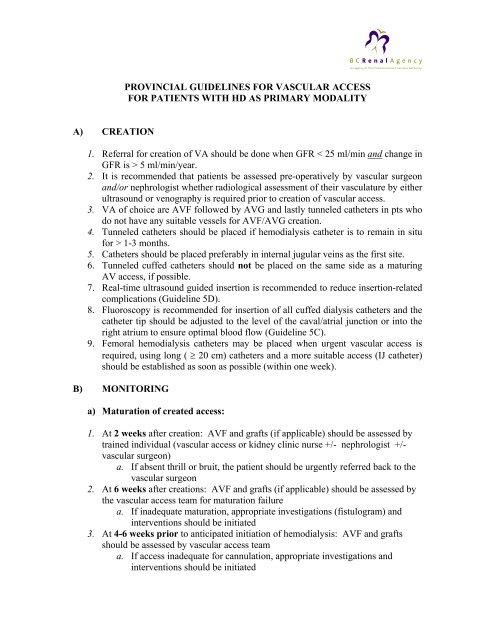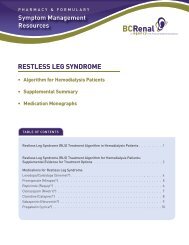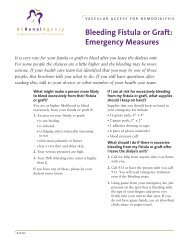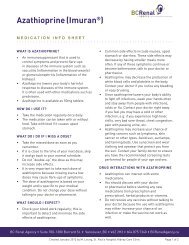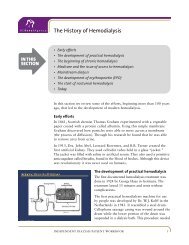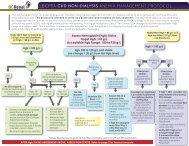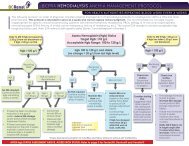PROVINCIAL GUIDELINES FOR VASCULAR ... - BC Renal Agency
PROVINCIAL GUIDELINES FOR VASCULAR ... - BC Renal Agency
PROVINCIAL GUIDELINES FOR VASCULAR ... - BC Renal Agency
Create successful ePaper yourself
Turn your PDF publications into a flip-book with our unique Google optimized e-Paper software.
<strong>PROVINCIAL</strong> <strong>GUIDELINES</strong> <strong>FOR</strong> <strong>VASCULAR</strong> ACCESS<br />
<strong>FOR</strong> PATIENTS WITH HD AS PRIMARY MODALITY<br />
A) CREATION<br />
1. Referral for creation of VA should be done when GFR < 25 ml/min and change in<br />
GFR is > 5 ml/min/year.<br />
2. It is recommended that patients be assessed pre-operatively by vascular surgeon<br />
and/or nephrologist whether radiological assessment of their vasculature by either<br />
ultrasound or venography is required prior to creation of vascular access.<br />
3. VA of choice are AVF followed by AVG and lastly tunneled catheters in pts who<br />
do not have any suitable vessels for AVF/AVG creation.<br />
4. Tunneled catheters should be placed if hemodialysis catheter is to remain in situ<br />
for > 1-3 months.<br />
5. Catheters should be placed preferably in internal jugular veins as the first site.<br />
6. Tunneled cuffed catheters should not be placed on the same side as a maturing<br />
AV access, if possible.<br />
7. Real-time ultrasound guided insertion is recommended to reduce insertion-related<br />
complications (Guideline 5D).<br />
8. Fluoroscopy is recommended for insertion of all cuffed dialysis catheters and the<br />
catheter tip should be adjusted to the level of the caval/atrial junction or into the<br />
right atrium to ensure optimal blood flow (Guideline 5C).<br />
9. Femoral hemodialysis catheters may be placed when urgent vascular access is<br />
required, using long ( ≥ 20 cm) catheters and a more suitable access (IJ catheter)<br />
should be established as soon as possible (within one week).<br />
B) MONITORING<br />
a) Maturation of created access:<br />
1. At 2 weeks after creation: AVF and grafts (if applicable) should be assessed by<br />
trained individual (vascular access or kidney clinic nurse +/- nephrologist +/-<br />
vascular surgeon)<br />
a. If absent thrill or bruit, the patient should be urgently referred back to the<br />
vascular surgeon<br />
2. At 6 weeks after creations: AVF and grafts (if applicable) should be assessed by<br />
the vascular access team for maturation failure<br />
a. If inadequate maturation, appropriate investigations (fistulogram) and<br />
interventions should be initiated<br />
3. At 4-6 weeks prior to anticipated initiation of hemodialysis: AVF and grafts<br />
should be assessed by vascular access team<br />
a. If access inadequate for cannulation, appropriate investigations and<br />
interventions should be initiated


